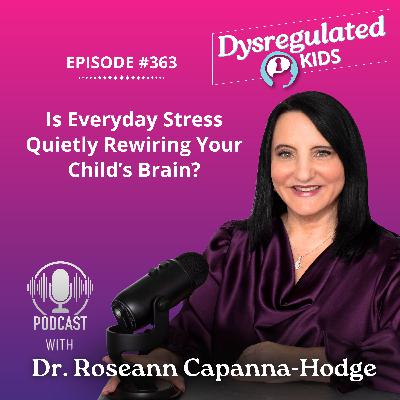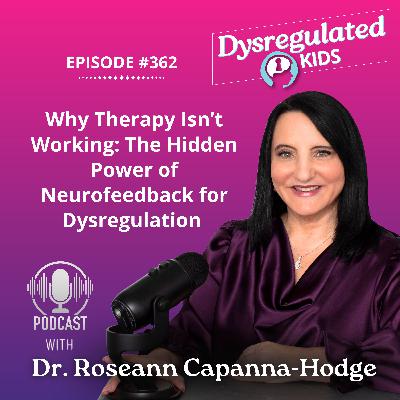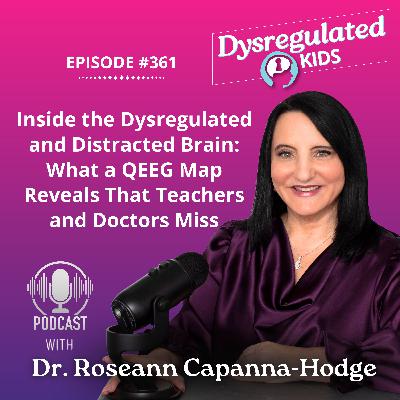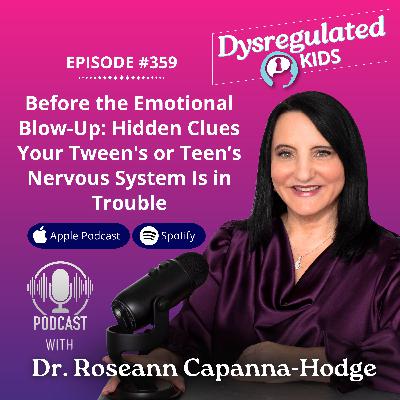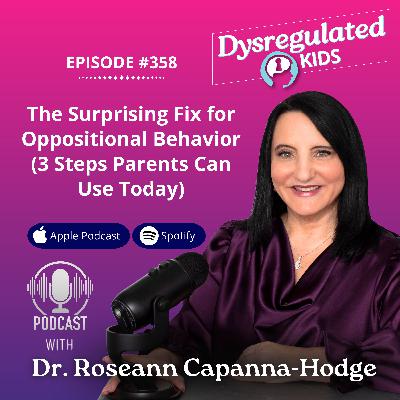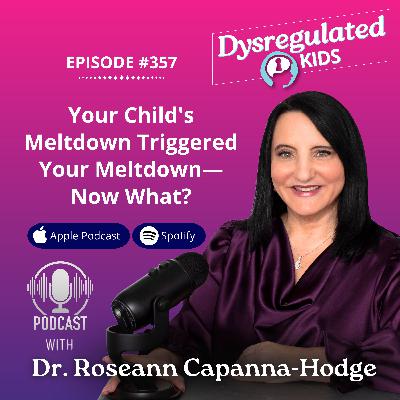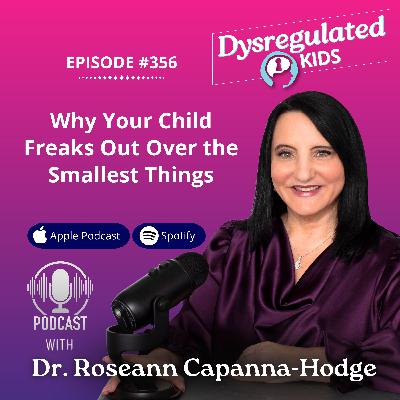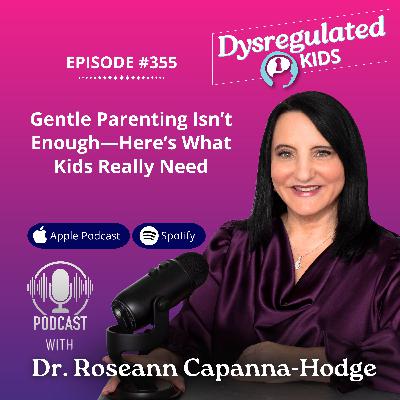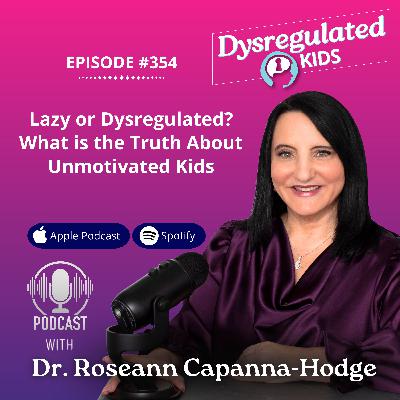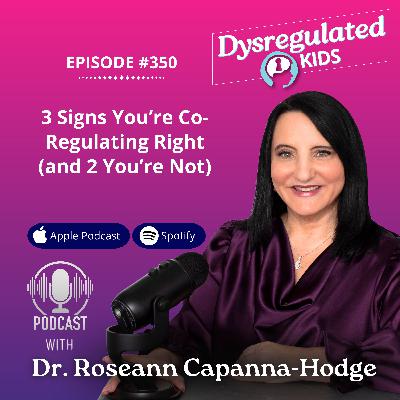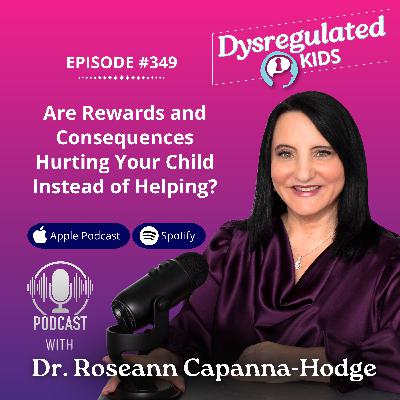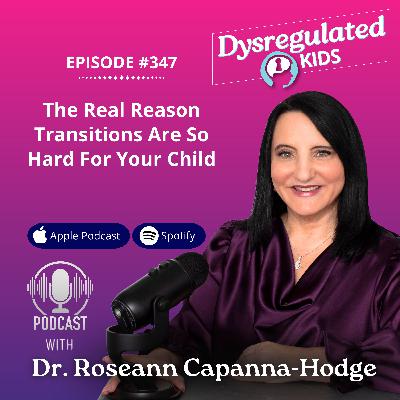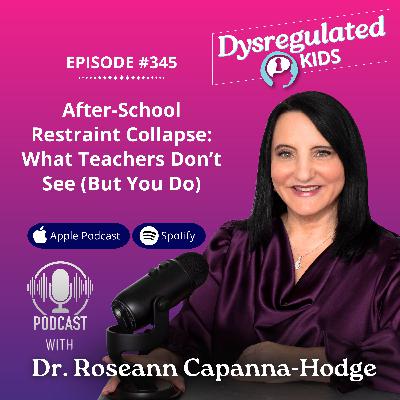351: How to Calm Your Child Without Saying a Word
Description
Have you ever noticed that the more you explain, the more your child melts down? Parenting a child who reacts this way can leave you exhausted, frustrated, and worried. You try to reason, but instead of calming down, your child gets even more upset.
In this episode, I’ll share why talking often backfires when kids are upset, and how your calm presence, body language, and deep breaths can help your child regulate without words. You’ll discover the brain science behind co-regulation and walk away with simple, practical strategies you can use in the moment to help your child feel safe.
Why does talking make my child more upset instead of calming them?
When kids are dysregulated, their brain shifts into fight, flight, or freeze. Logic and language shut down, and many parents notice that their words actually feel overwhelming instead of calming.
- More words = more stimulation → which leads to bigger emotions.
- A calm body speaks louder than lectures.
- Behavior is communication, not defiance.
🗣️ “In the heat of the moment, silence and co-regulation calm the brain faster than explanations.” – Dr. Roseann
What can I do in the moment when my child is losing control?
Instead of talking, use your body language and presence to signal safety. This is what helps many kids settle down.
- Take a deep breath before you respond. Ask yourself: Am I regulated enough to help my child right now?
- Soften your body → drop your shoulders, relax your arms, loosen your jaw.
- Stay at their level → for toddlers, sit on the floor; for older kids, sit nearby. Don’t loom over them.
- Eye contact is optional → for some children, less is more.
Your calm cues reduce cortisol and show your child they are safe.
When your child is dysregulated, it’s easy to feel helpless.
The Regulation Rescue Kit gives you the scripts and strategies you need to stay grounded and in control.
Become a Dysregulation Insider VIP at www.drroseann.com/newsletter and get your free kit today.
How do I calm my child without words?
Co-regulation works through silent strategies that their nervous system picks up instantly.
- Use rhythmic cues → slow breathing, gentle rocking, or humming. A predictable rhythm helps kids reset.
- Offer safe touch if welcomed → a hug, a hand on the shoulder, or letting them crawl into your lap.
- Stay present, not pressuring → don’t force them to talk or “explain” while upset.
Kids can borrow your calm until they find their own.
When your child is stuck in dysregulation, more effort isn’t the answer—a reset is. Quick CALM shows you how to calm the brain first with science-backed tools that get real results.
Can my calm really teach my child self-regulation?
Yes—science backs this up. Mirror neurons mean kids sync with your state, not your words. Over time, they learn to regulate by practicing alongside you.
- Your calm presence is the model → kids copy what they see and feel.
- Safety cues build connection → when a child feels safe, their brain learns new ways to manage emotions.
- Consistency matters → the more you practice, the more your child’s brain wires for regulation.
Staying calm is not just about this moment—it’s teaching your child lifelong self-regulation skills.
What’s one thing I can try today to help my child calm down?
The next time your child escalates:
- Say nothing.
- Take a deep breath.
- Soften your body language.
- Let your calm do the talking.
Try this for seven days. You’ll notice shifts in intensity, recovery, and connection—even if it isn’t perfect every time.
Talking won’t calm a dysregulated brain—safety does. When you lead with calm, your child learns to follow. Remember, behavior is communication, and your calm body language is the message they can actually hear.
Every child’s journey is different. That’s why cookie-cutter solutions don’t work.
Take the free Solution Matcher Quiz and get a customized path to support your child’s emotional and behavioral needs—no guessing, no fluff.
Start today at www.drroseann.com/help
FAQs
Why does my child get more upset when I explain?
When kids are dysregulated, logic goes offline. More words create overwhelm instead of relief. Silence, safety cues, and co-regulation calm their nervous system so they can listen later.
What body language helps an anxious child feel safe?
Soften your face, relax your arms, and avoid looming over them. Gentle posture, soft eyes, and calm breathing tell your child’s nervous system: “You’re safe.”
Should I force eye contact when my child is upset?
No. Forced eye contact increases stress. Some kids calm faster with less direct eye contact. Follow their lead and use your calm body instead of pressure.
How can older kids learn to self-regulate?
Model regulation first. When you practice calm breathing, gentle rhythms, and patience, older kids mirror your state. Over time, they learn to use these same strategies for self-regulation.



